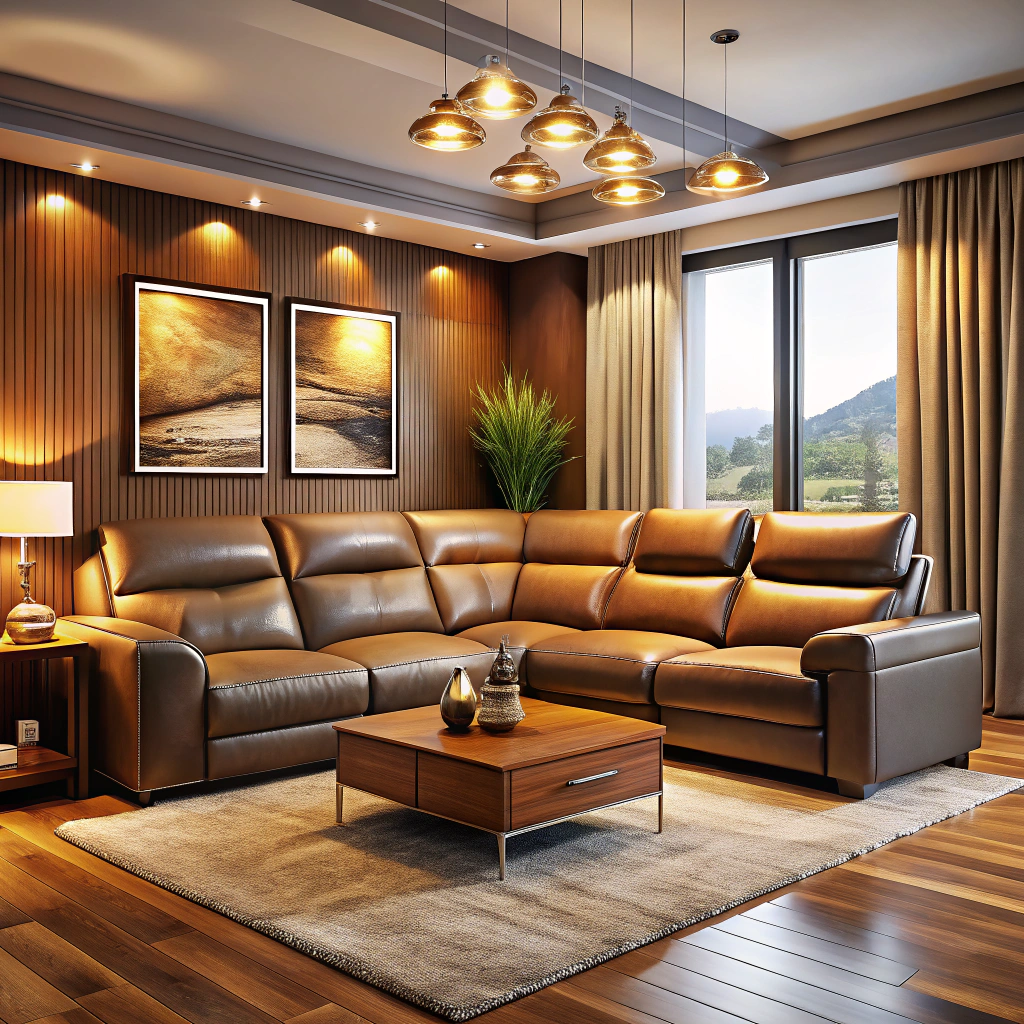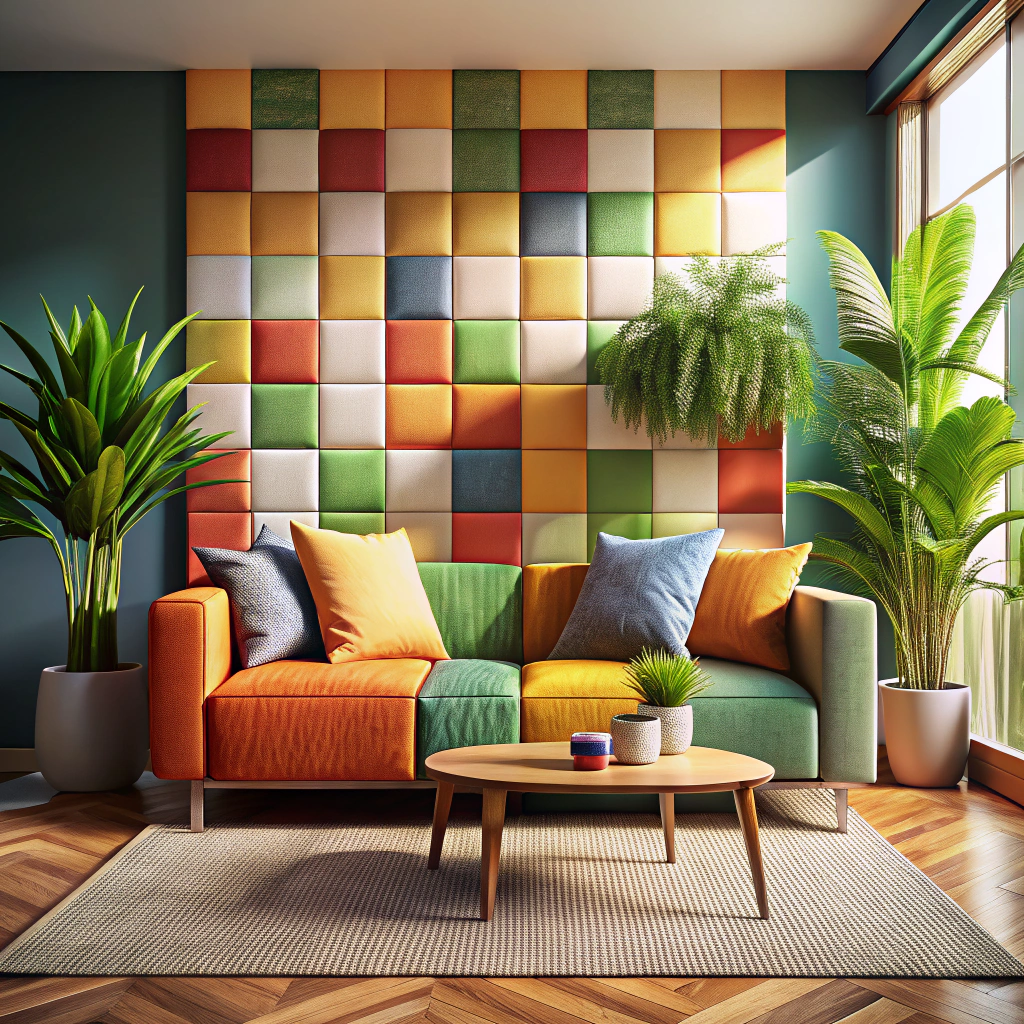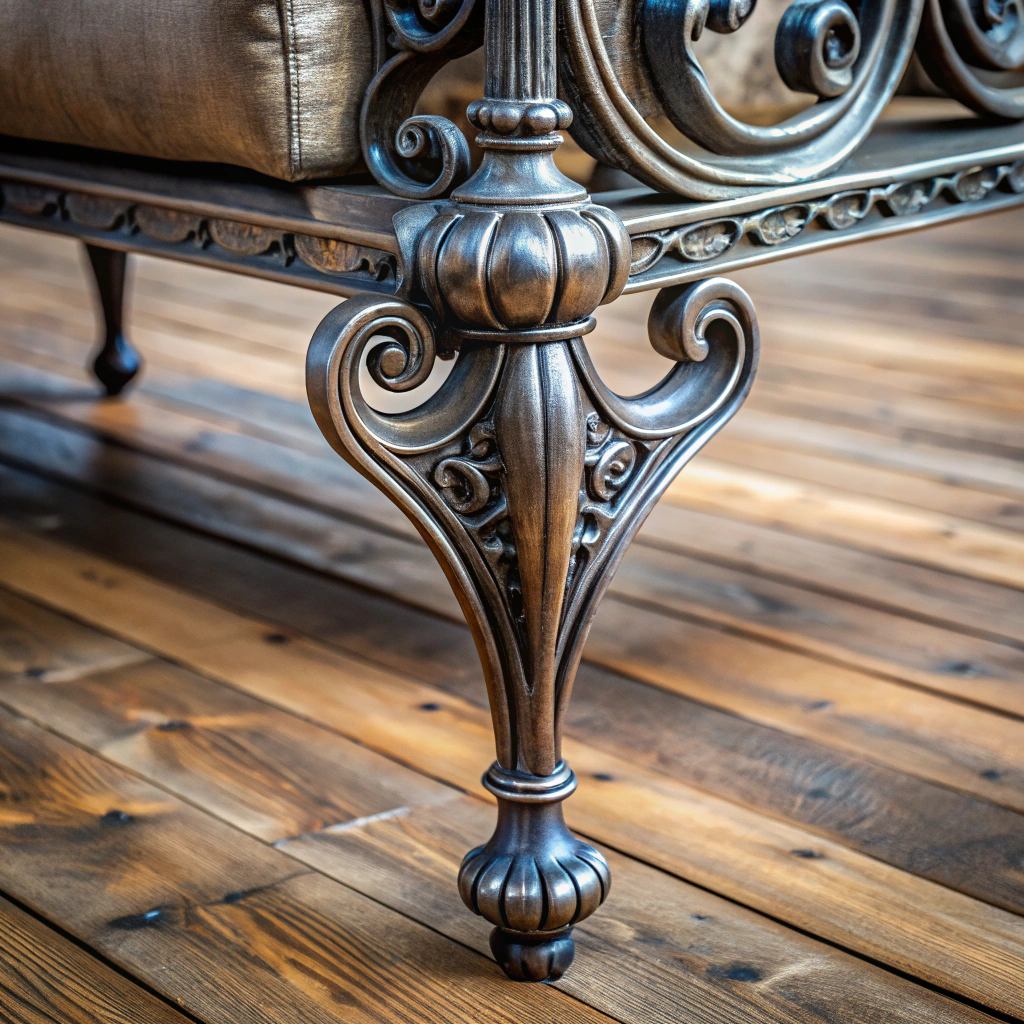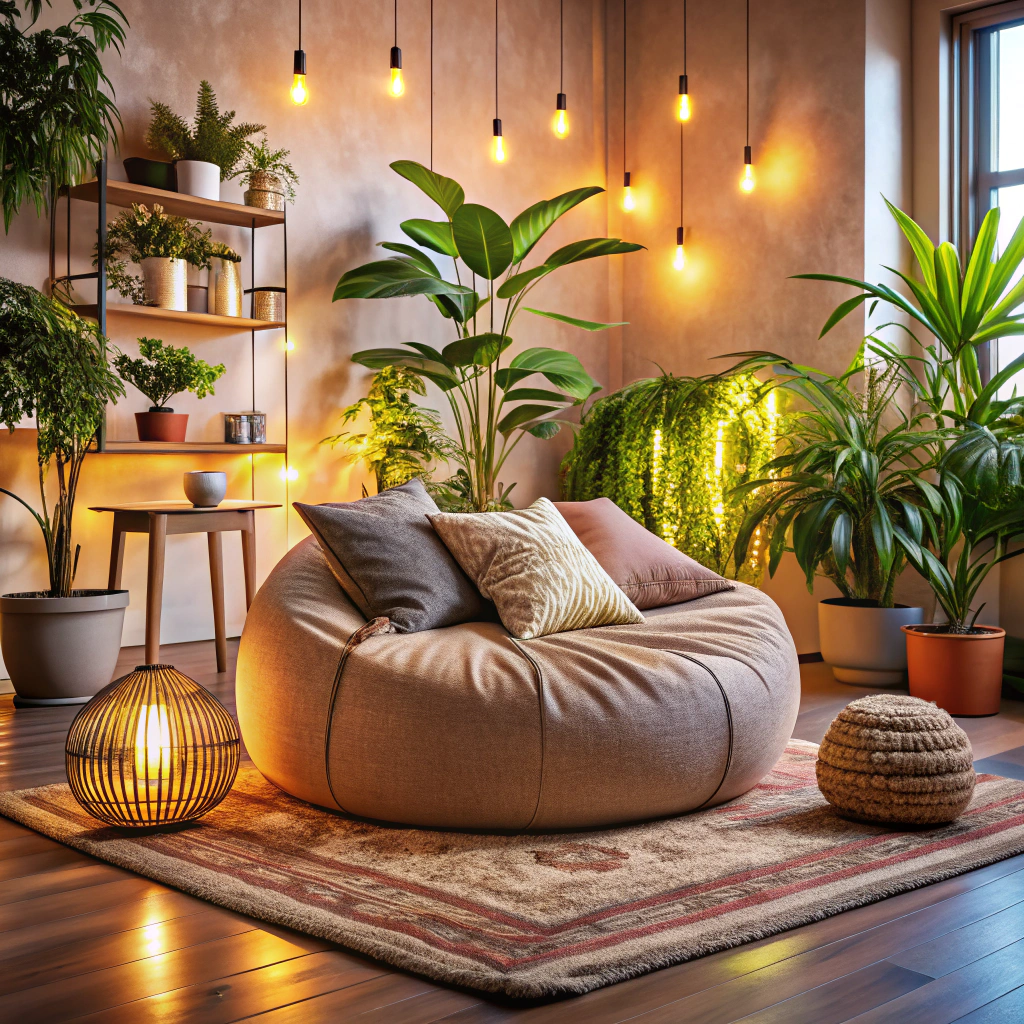Last updated on
Discover the art of maximizing space and elevating your living room’s aesthetic by effectively arranging two couches in a small area.
Are you struggling to arrange two couches in your small living room? Don’t worry, you’re not alone! Many homeowners face this challenge when trying to create a cozy and functional seating area. But with a little creativity and strategic placement, you can make it work.
In this article, we’ll share some expert tips on how to arrange two couches in a small living room that will maximize space and style. So let’s get started!
Key takeaways:
- Assess room dimensions and consider architectural features
- Define the living room’s function: entertaining or relaxation
- Select couches with appropriate sizes and shapes
- Experiment with creative placement for visual balance
- Maximize traffic flow and create conversation areas
Table of Contents
Assessing Room Dimensions

The first step in arranging two couches in a small living room is to assess the dimensions of your space. Measuring the length, width, and height of your room will help you determine how much furniture you can fit comfortably without making it feel cramped or cluttered.
Once you have these measurements, consider the placement of doors and windows as well as any architectural features such as fireplaces or built-in bookshelves. These elements can impact where you place your couches and how they interact with other pieces in the room.
Defining Living Room Function
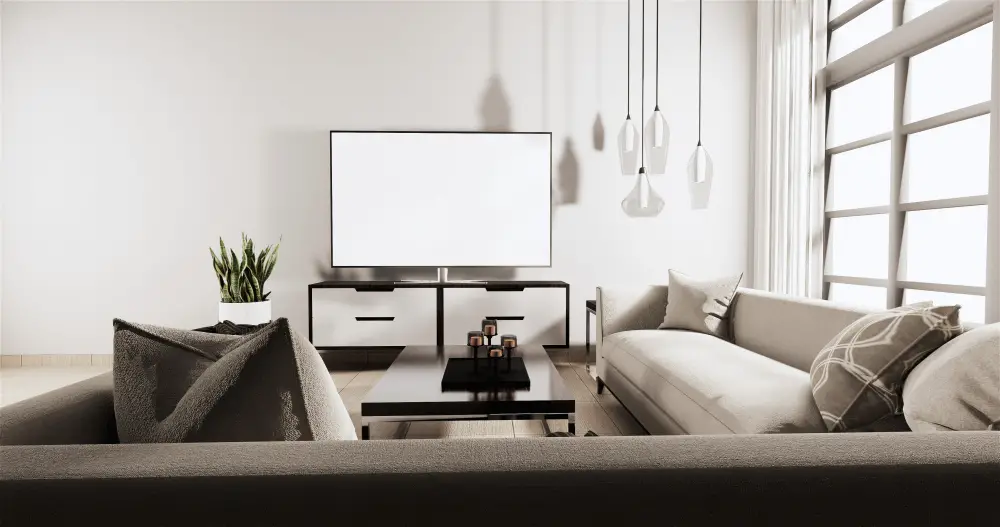
Are you using your living room primarily for entertaining guests or as a cozy spot for family movie nights? Once you have determined the purpose of your space, it will be easier to decide on the best layout and furniture placement.
For example, if you plan on hosting frequent gatherings with friends and family, creating conversation areas should be a top priority. This can be achieved by placing two identical sofas opposite each other or creating an L-shape with one sofa and adding chairs around it.
On the other hand, if relaxation is at the forefront of how you use this area then floating sofas may work better. By positioning them away from walls towards each other creates an intimate atmosphere that’s perfect for lounging around while watching TV.
Selecting the Right Couch Sizes

First and foremost, measure your space accurately so that you know what size of furniture will fit comfortably in the area. You don’t want to end up with oversized sofas that take up too much space or undersized ones that look out of place.
Another important factor is choosing couches with appropriate dimensions relative to each other. If one sofa is significantly larger than the other, it can throw off visual balance and make your seating arrangement feel awkward.
To avoid this issue, opt for two identical sofas or select models with similar dimensions and shapes. This way, they’ll complement each other nicely while still providing enough seating capacity for everyone in your household.
Considering Couch Shapes

Different shapes can create different visual effects and impact the overall flow of your space. For instance, if you have a rectangular-shaped living room, placing two identical sofas opposite each other can create symmetry and balance.
On the other hand, if you have an L-shaped or irregularly shaped living room, floating your sofas away from walls or creating an L-shape with them may work better.
Another factor to consider is whether you want curved or straight-lined couches. Curved couches are great for softening sharp angles in a space while adding visual interest; however they tend to take up more floor area than their straight-lined counterparts which could be problematic when working with limited square footage.
Experimenting With Visual Balance

You want to create a harmonious and inviting space that doesn’t feel cluttered or cramped. One way to achieve this is by experimenting with the placement of your furniture.
Try placing one couch against the wall and positioning the other at an angle across from it. This creates an interesting focal point while also maximizing floor space.
Another option is to place both couches parallel to each other but offset them slightly so they’re not perfectly aligned. This adds depth and dimensionality while still maintaining symmetry.
You can also try creating different levels by using furniture pieces of varying heights, such as adding a tall bookshelf or floor lamp next to one of the sofas.
Creating Conversation Areas

You want to ensure that your guests can comfortably chat with each other without having to shout or strain their necks. One way to achieve this is by placing the couches facing each other and adding a coffee table in between them.
Another option is to create an L-shape with the two sofas, which will allow for more seating space while still maintaining an intimate atmosphere. If you have additional chairs or ottomans, consider placing them strategically around the room so that everyone has a place to sit and join in on conversations.
Remember also not only about positioning but also about comfort – make sure there’s enough legroom between furniture pieces so people can move around easily without feeling cramped.
Maximizing Traffic Flow
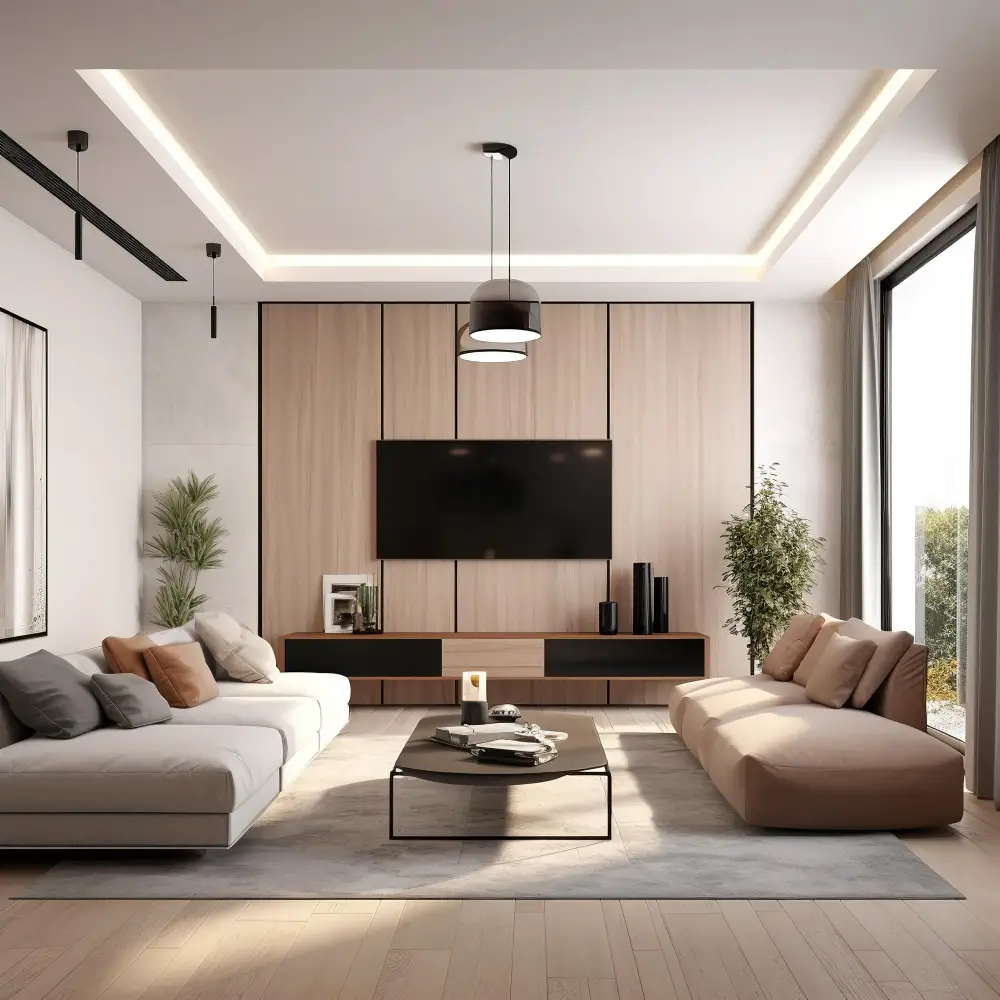
You don’t want your guests to feel cramped or have difficulty moving around the space. To maximize traffic flow, ensure that there is enough space between each piece of furniture and that pathways are clear.
One way to achieve this is by creating a natural walkway between the two couches. This can be done by placing them parallel with enough distance in-between for people to comfortably pass through.
Another option is positioning one sofa against a wall while leaving some breathing room on either side for easy movement around it. The other sofa can then be placed perpendicular or at an angle from the first one, allowing you to create an L-shape seating arrangement without compromising on mobility.
Place Identical Sofas Opposite Each Other
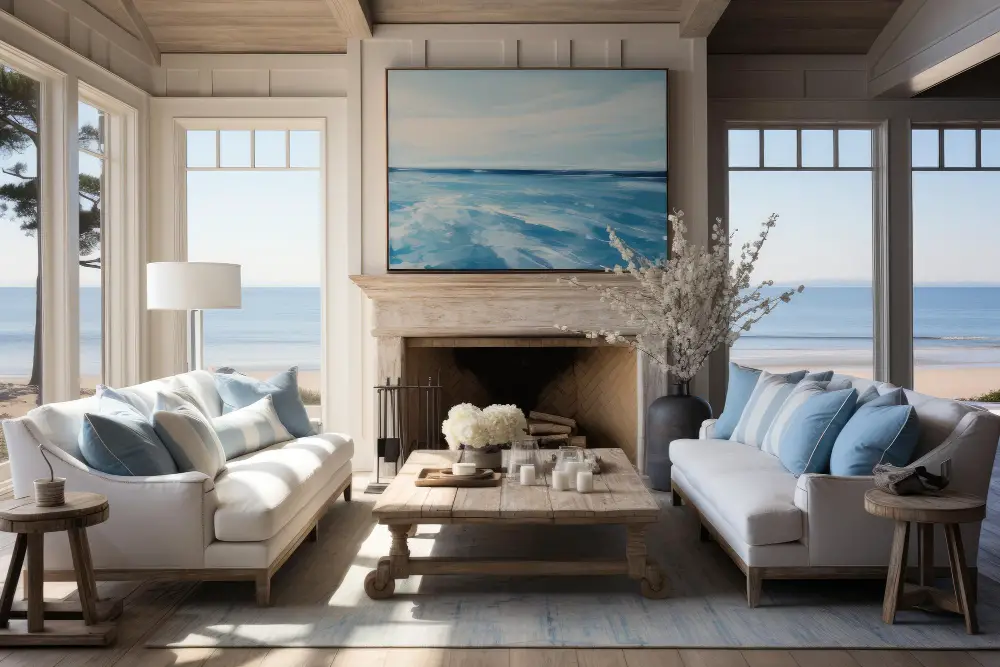
This layout creates an intimate and cozy seating area that encourages conversation and socialization. It’s also perfect for watching TV or movies with friends and family.
When positioning identical sofas, make sure they face each other directly, leaving enough space between them for a coffee table or ottoman. You can also add accent chairs on either side to create additional seating options.
This arrangement works best when you have a symmetrical living room with ample space in the center. If your living room has an asymmetrical shape, consider floating one sofa away from the wall at an angle to create visual interest while still maintaining balance.
Create an L-Shape
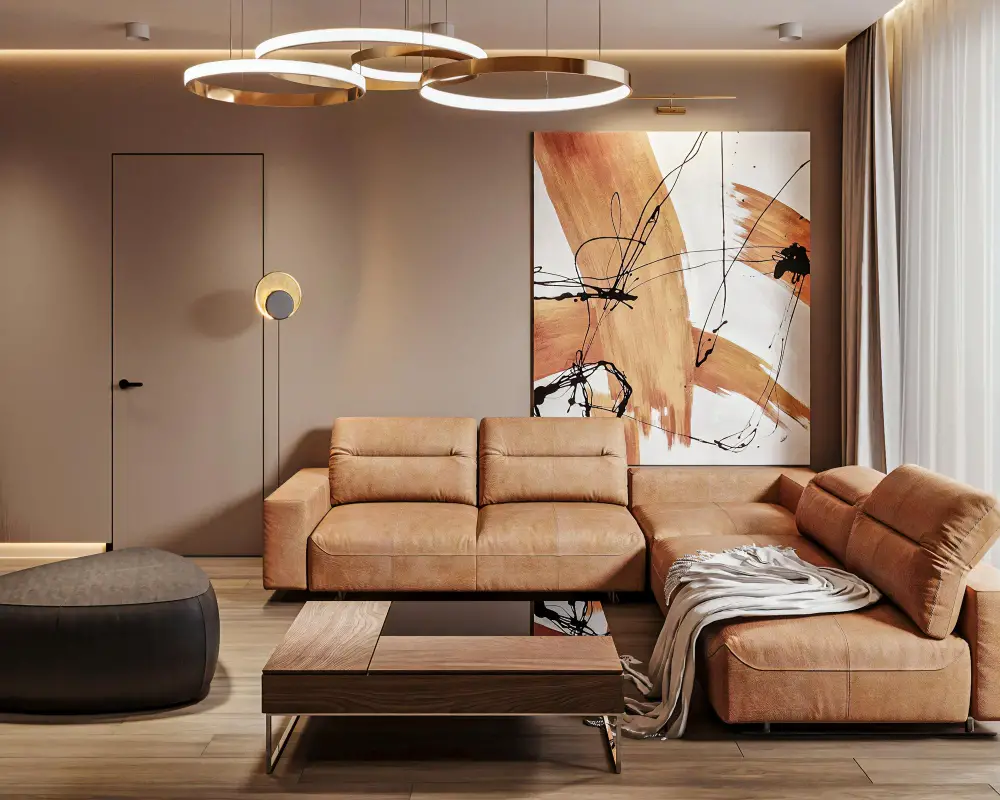
This configuration involves placing one couch perpendicular to the other, forming an “L” shape. The beauty of this arrangement is that it maximizes seating while still allowing for easy traffic flow.
To create an L-shape with your two couches, start by positioning one sofa against a wall or corner at a right angle. Then place the second sofa adjacent to it, facing outward into the room.
Be sure to leave enough space between them so that people can comfortably walk around and sit down.
This layout works particularly well if you have a TV in your living room since both sofas will have clear views of the screen without obstructing each other’s view.
Creating an L-shaped seating area also allows you to add additional chairs or accent pieces such as ottomans or side tables for added functionality and style.
Float the Sofas
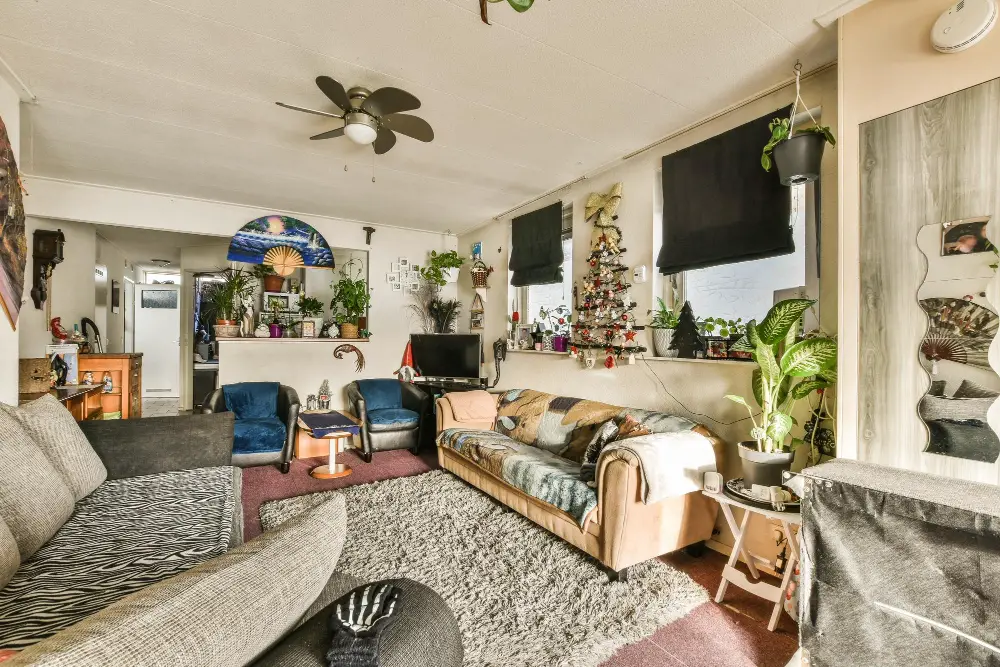
This means placing both sofas away from the walls and positioning them facing each other, with a coffee table or ottoman in between. Floating your couches creates an intimate seating area that encourages conversation and socializing.
When floating your sofas, it’s important to leave enough space around them for traffic flow. You don’t want people feeling cramped or having to squeeze past furniture when moving through the room.
To ensure visual balance, consider adding additional seating options such as accent chairs or stools that can be easily moved around as needed. And don’t forget about incorporating decorative elements like throw pillows and blankets that can add color and texture while also making your space feel cozy.
Combine a Sofa and a Loveseat
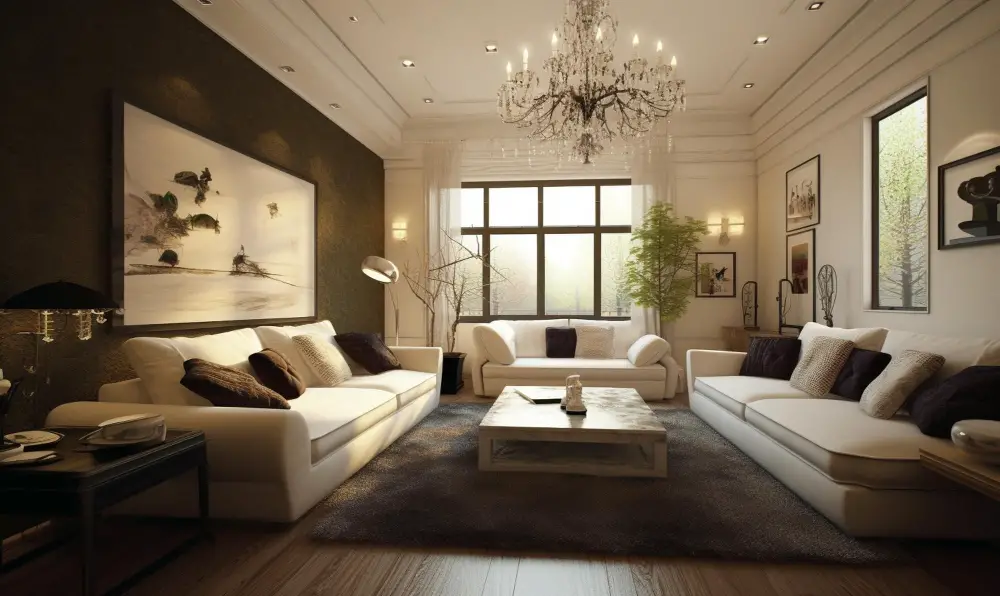
This option is perfect if you have limited space but still want to provide ample seating for your guests. You can place the sofa against one wall and position the loveseat perpendicular to it, creating an L-shape that maximizes floor space while providing plenty of room for people to sit.
When selecting your couches, make sure they complement each other in terms of style and color coordination. If possible, choose pieces from the same collection or manufacturer so that they match perfectly.
To further enhance this setup’s functionality, add accent chairs or ottomans around them as needed. These additional pieces will help create conversation areas within your living room while also adding extra seating options when entertaining guests.
Combining a sofa and loveseat is an excellent way to maximize small living spaces’ potential without sacrificing comfort or style.
Utilize Corner Spaces Effectively
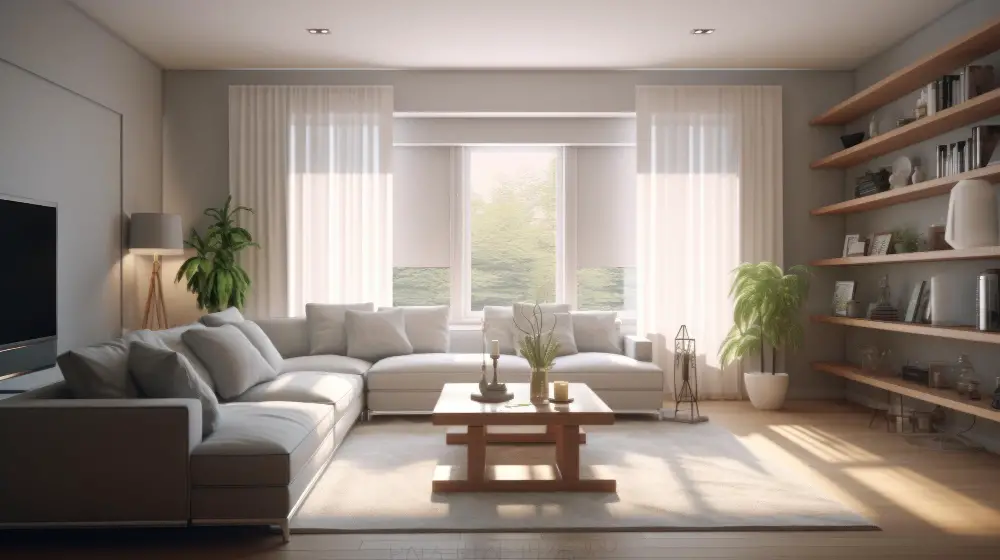
One area that is often overlooked is the corners of the room. Corners can be tricky to decorate, but they offer valuable real estate for additional seating or storage options.
To make use of corner spaces effectively, consider placing an accent chair or a small side table between the two couches. This will create an intimate conversation area and add visual interest to your living room design.
Another option is to install floating shelves on either side of the corner and display decorative items such as books, plants or picture frames. This not only adds functionality but also draws attention away from awkward angles in your space.
If you’re looking for more seating options without taking up too much floor space, try adding a cozy window seat with built-in storage underneath it into one corner of your living room. Not only does this provide extra seating when needed; it also offers practical storage solutions for blankets and pillows.
Integrate Additional Seating Options
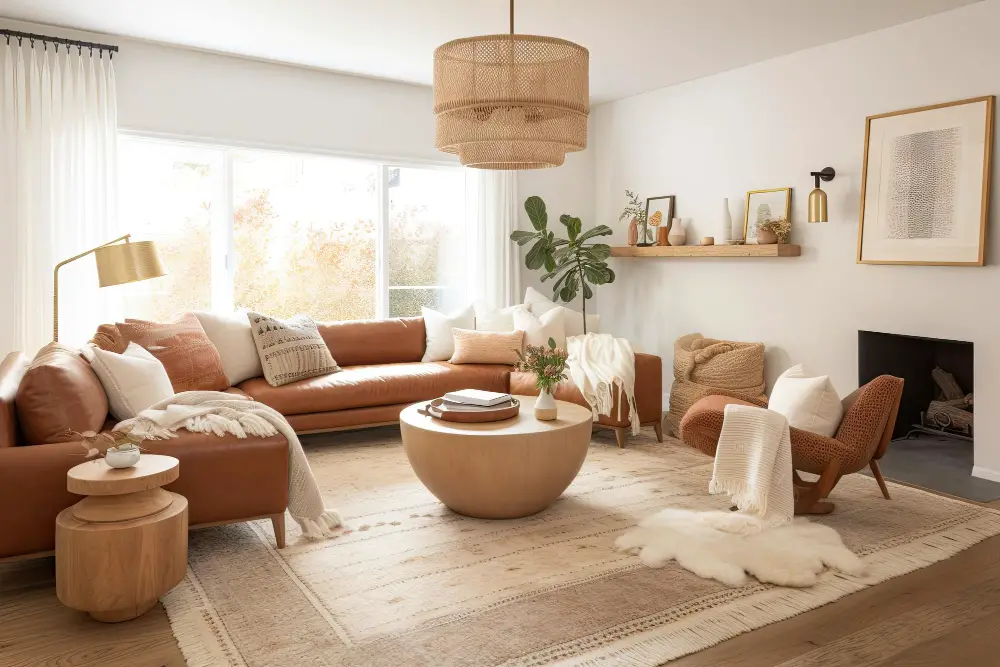
Integrate chairs, ottomans or benches into your layout to create more seating without taking up too much space. A pair of armchairs placed opposite the couches can add symmetry and balance while also providing extra seats for guests.
Ottomans are another great option as they serve multiple purposes – they can function as footrests or even coffee tables when paired with trays. Benches are also versatile pieces that work well in small spaces; you could place one against the wall behind one of the sofas and use it for additional seating during gatherings.
Remember that integrating additional seating options should not compromise traffic flow within your living room. Ensure there is enough space between each piece of furniture so people can move around comfortably without feeling cramped.
Applying Color Coordination
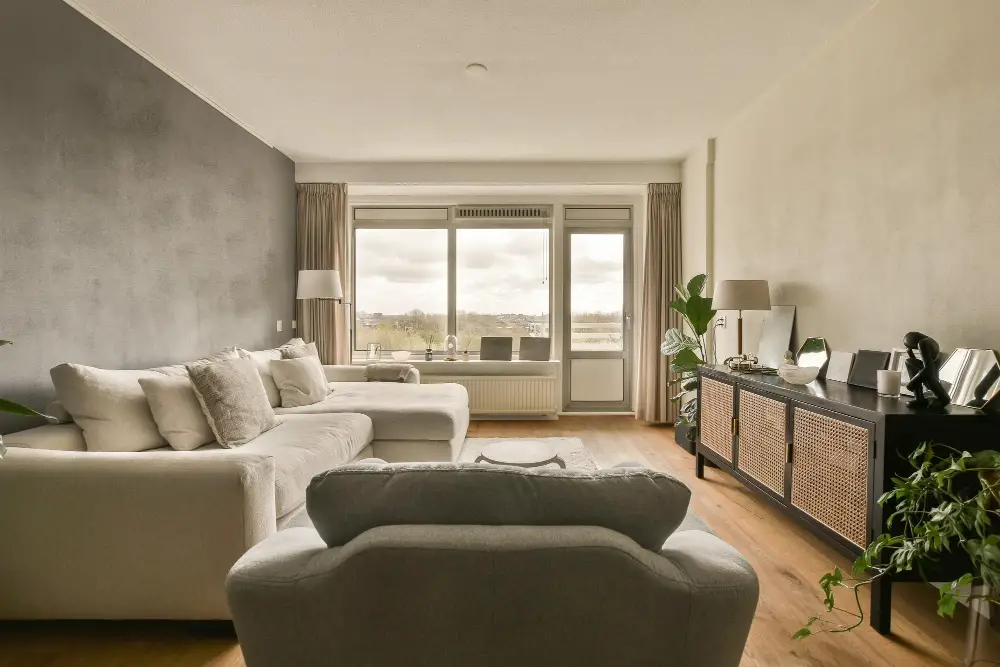
When arranging two couches in a small space, you want to ensure that they complement each other and the rest of your decor. One way to achieve this is by selecting colors that work well together.
Consider choosing a neutral color for one sofa, such as beige or gray, and then adding pops of color with accent pillows on both sofas. Alternatively, you could opt for two different colored sofas but keep them within the same color family.
Another option is to choose complementary colors; these are hues opposite each other on the color wheel (e.g., blue and orange). This creates visual interest while still maintaining harmony in your living room’s overall aesthetic.
Remember not to go overboard with too many bold colors as this can overwhelm a small space. Instead, aim for balance by incorporating neutrals alongside brighter shades.
Adding Rugs for Cohesion

Rugs can help define different areas of the room, such as a seating area or a reading nook. They also add texture, color, and warmth to your decor.
When arranging two couches in a small living room, consider placing one large rug underneath both sofas. This will anchor the furniture pieces together while creating visual unity in the space.
Alternatively, you could use two smaller rugs placed under each sofa separately but make sure they complement each other in terms of style and color scheme for consistency.
When selecting rugs for your living room arrangement with two couches consider choosing ones that are low pile or flat weave so that they don’t interfere with traffic flow between them.
Incorporating Vertical Space
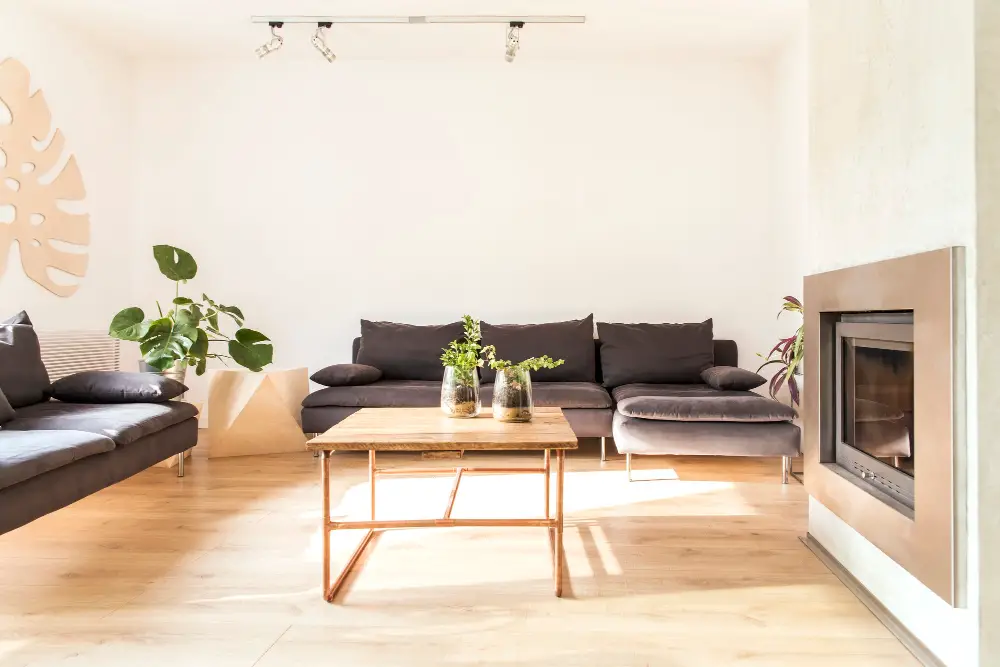
Vertical space refers to the area above eye level and below the ceiling. This often-overlooked area can provide additional storage, display opportunities, and even seating options.
One way to incorporate vertical space is by installing floating shelves or bookcases on empty walls. These shelves not only add visual interest but also offer practical storage for books, decorative items or plants.
Another option is hanging curtains high above windows which creates an illusion of height and makes your ceilings appear taller than they are in reality.
You could also consider adding tall floor lamps that draw attention upward while providing ambient lighting for your living room.
Layering Room Lighting
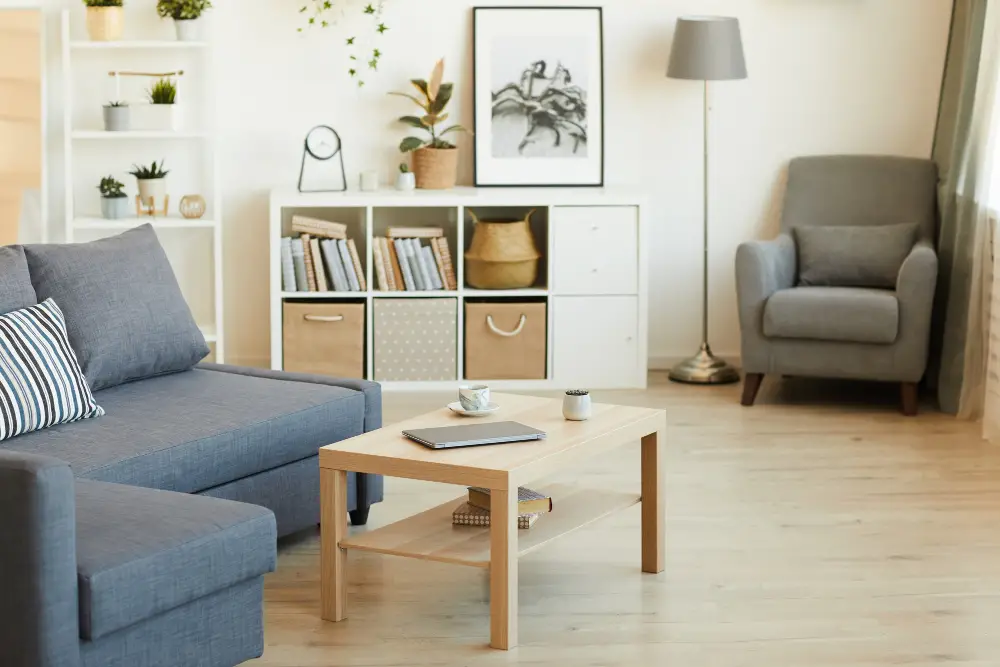
When arranging two couches in a small living room, lighting can be used to enhance the space’s overall look and feel. Layered lighting is one way to achieve this goal.
To layer your living room’s lighting effectively, you should consider using different types of light sources such as overhead lights, table lamps or floor lamps. Overhead lights provide general illumination for the entire space while table lamps or floor lamps offer more focused task lighting that can be directed towards specific areas like reading nooks or conversation zones.
By combining these different types of light sources at varying heights throughout your living area, you’ll create depth and dimension that will make your small space feel larger than it actually is. Dimmer switches are also great tools for controlling brightness levels depending on what activities are taking place in the room.
Employing Wall Art Wisely
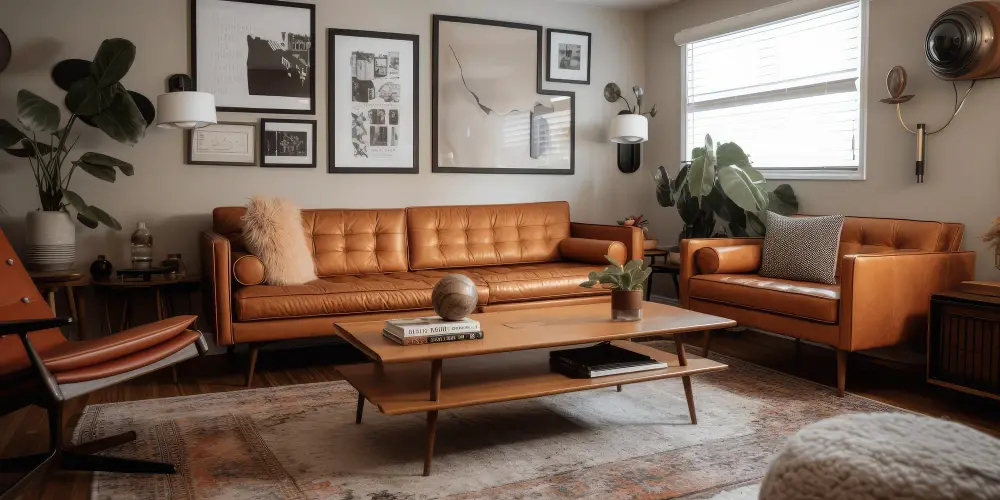
When it comes to arranging two couches in a small space, you need to be strategic about where you place your wall art. Hanging artwork too high or too low can disrupt the visual balance of the room and make it feel cluttered.
To employ wall art wisely in a small living room with two couches, consider hanging one large piece above each sofa or creating a gallery wall on one of the walls between them. This will create symmetry and draw attention away from any awkward gaps between furniture pieces.
Another option is using floating shelves instead of traditional framed artwork. You can display decorative items such as vases, books, candles or plants that complement your decor while also adding depth and dimensionality without taking up valuable floor space.
Utilize Multi-functional Furniture
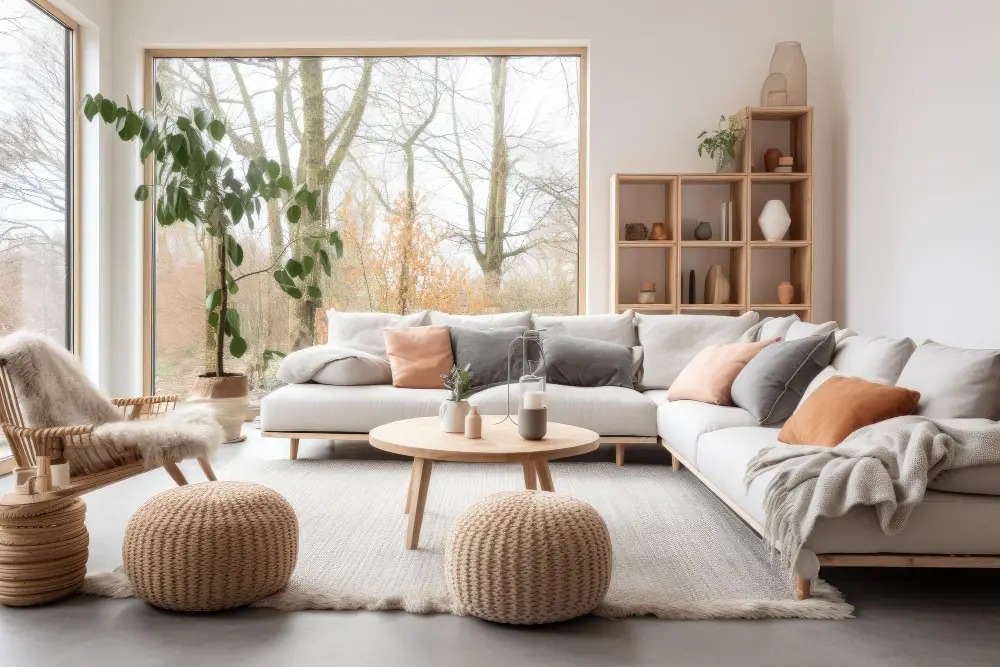
Not only does it save space, but it also adds versatility and functionality to your seating area. Consider investing in a storage ottoman that doubles as extra seating or a coffee table with hidden compartments for storing blankets and magazines.
Another great option is a sleeper sofa that can transform into an additional bed for guests. This not only saves space but also provides added convenience when hosting overnight visitors.
If you’re short on floor space, consider mounting floating shelves or installing built-in cabinets to store books, decorative items or even electronics like speakers and gaming consoles.
Optimize Traffic Flow

You don’t want your guests to feel cramped or have difficulty moving around the space. To optimize traffic flow, ensure that there is enough space between each piece of furniture and that pathways are clear.
One way to achieve this is by creating a natural walkway between the two couches. This can be done by placing them parallel with enough distance in-between for people to pass through comfortably.
Another option is positioning one sofa against a wall while leaving some breathing room on either side for easy movement around it. The other sofa can then be placed perpendicular or at an angle from the first one, allowing you more flexibility when designing your seating arrangement.
By optimizing traffic flow and ensuring there’s ample space for movement within your living area, you’ll create an inviting atmosphere where everyone feels comfortable and relaxed – even in tight quarters!
FAQ
How far apart should two couches be?
The optimal distance between two couches is at least 3 ½ feet apart for sufficient movement space.
How to layout furniture in a small living room?
To layout furniture in a small living room, arrange it around a designated focal point, such as a TV, fireplace, window, or wall decor, while ensuring a clear view of the focal point by positioning furnishings directly facing it.
How do you make two different couches work?
To make two different couches work, incorporate accessories like cushions or throws, use neutral/complementary tones to unify colors, or establish an eclectic design theme.
How do you arrange a sofa and loveseat in a small living room?
In a small living room, arrange the sofa and loveseat to face each other on the sides, forming a square shape, and add matching chairs with a round ottoman in the middle for a cozy, intimate, and space-efficient setup.
What are some creative ways to maximize space when placing two couches in a small living room?
To maximize space in a small living room, consider arranging two couches in an L-shape or facing each other with a coffee table in between, while utilizing multifunctional furniture and storage solutions.
How can you utilize corner spaces effectively when arranging two couches in a limited space?
To effectively utilize corner spaces when arranging two couches in a limited space, place them in an L-shaped arrangement, maximizing the room’s available corner area.
What factors should be considered when selecting the size and style of couches for a small living room?
When selecting the size and style of couches for a small living room, consider factors such as available space, room layout, function, style, and comfort.
